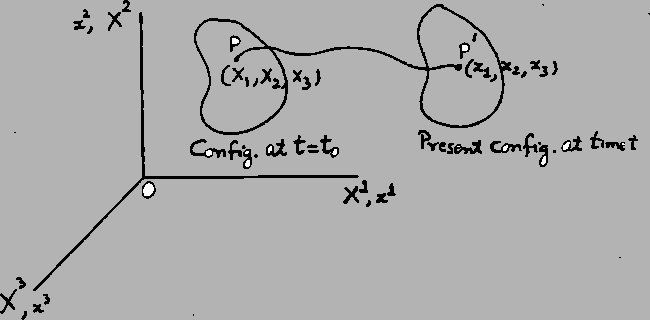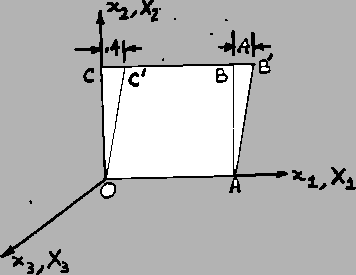Next: Referential and Spatial Descriptions Up: Kinematics Previous: Kinematics
Let us suppose that a body, at time ![]() , occupies a
region of the physical space. The position of a particle at this time can be
described by its coordinates
, occupies a
region of the physical space. The position of a particle at this time can be
described by its coordinates ![]() with respect to a fixed rectangular
Cartesian coordinate system.
with respect to a fixed rectangular
Cartesian coordinate system.

Let the body undergo a motion and point ![]() move to
move to ![]() whose
coordinates with respect to the same fixed axes are
whose
coordinates with respect to the same fixed axes are ![]() . Then an equation
of the form
. Then an equation
of the form
| (3.1.1) |
Example: Consider the motion
Solution: For the particle which at ![]() was at the origin,
was at the origin,

Similarly, the particle which at time ![]() was at the position
was at the position
![]() will move to
will move to
![]() .
That is, particles on line
.
That is, particles on line ![]() do not move.
do not move.
A particle
![]() on line
on line ![]() will occupy, at time
will occupy, at time ![]() , the
position
, the
position
A particle
![]() on line
on line ![]() moves to
moves to
Thus at time ![]() , the side view of the cube changes from a square
to a parallelogram as shown.
, the side view of the cube changes from a square
to a parallelogram as shown.
The motion given in this example is known as simple shearing motion.